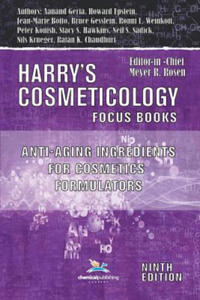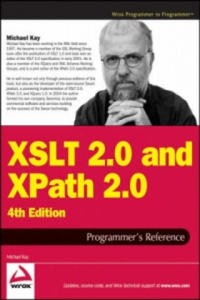libristo ashima inc d b a ashima publishing
- znaleziono 7 produktów w 3 sklepach
Spalona Żywcem Wyd. Kieszonkowe - Souad
Książki & Multimedia > Książki
Opis - Pierwsze na świecie świadectwo ofiary zbrodni honorowej. Miała siedemnaście lat i zakochała się: zhańbiła rodzinę. Więc rodzina wydała na nią wyrok śmierci... Pokochała go pierwszą miłością. Myślała, że się z nią ożeni. Ale ukochany zniknął, a ona odkryła, że jest w ciąży. A w jej świecie to najcięższa zbrodnia... W zapomnianej przez Boga wiosce w Cisjordanii kobiety są warte mniej niż zwierzęta domowe. Tu mężczyzna jest panem życia i śmierci żony, córki, siostry. Brat może bezkarnie zabić siostrę, matka - córkę, kolejną bezużyteczną dziewczynkę, jaka się urodzi. Tu kobiecie odbiera się godność, a nawet życie zgodnie z odwiecznym obyczajem i uświęconą tradycją. A śmierć jest karą dla dziewczyny, która zhańbi rodzinę. Tak jak Souad. Wyrok wydaje jej ojciec. Szwagier dokonuje egzekucji. Oblewa Souad benzyną i podpala... SOUAD przeżyła - cudem, ale rodzina usiłowała zabić ją nawet w szpitalu. Na zawsze jednak pozostanie straszliwie okaleczona - na ciele i duszy. I wciąż musi się ukrywać; dopóki żyje, jej rodzinę okrywa hańba. Spalona żywcem, opublikowana pod pseudonimem szokująca opowieść o piekle, jakim było jej dzieciństwo i młodość, stała się międzynarodowym bestsellerem. Wydana w 37 w krajach książka przerywa tabu milczenia wobec istniejącej nadal w krajach muzułmańskich barbarzyńskiej tradycji. Nieludzkiego obyczaju, prawa mężczyzn, na mocy którego co najmniej pięć tysięcy kobiet pada co roku ofiarą zbrodni honorowej. Nazwa - Spalona Żywcem Wyd. Kieszonkowe Autor - Souad Oprawa - Miękka Wydawca - Amber Kod ISBN - 9788324159406 Kod EAN - 9788324159406 Wydanie - 1 Rok wydania - 2016 Tłumacz - 31182,maria rostworowska; Format - 110 x 175 x 14 Ilość stron - 224 Podatek VAT - 5% Premiera - 2016-06-23
Sklep: InBook.pl
Destiny's Child - Destiny's Child - CD Columbia
Muzyka > Płyty CD > Rap, Hip-Hop
Destiny's Child - Destiny's Child - CD pudełko plastikowe, stan płyty dobry , delikatne ryski płyta nie przeskakuje, nie zacina się - odsłuchana Label: Columbia
Sklep: Allcollect
Anti-Aging Ingredients for Cosmetics Formulators Chemical Publishing Co Inc.,U.S.
Książki / Literatura obcojęzyczna
The new 9th edition of Harry's Cosmeticology is available as a 3 volume set containing over 2600 pages of new information on the recent changes in the cosmetic and personal care industry. Chemical Publishing is now offering key parts of the title for those interested in a particular subject area covered in the book. Harry's Cosmeticology 9th Edition has developed a new line of "Focus Books" for this purpose. Focus books are a series of selected chapters that can be used as a reference guide for a particular subject area. This focus book covers: TOPICAL RETINOIDS - Author - Aanand N. Geria, MD - 4.3.1.1 Introduction - 4.3.1.2 Pharmacology - 4.3.1.3 Indications - a. Acne - b. Melasma and Post-Inflammatory Hyperpigmentation - c. Photo-Aging - 4.3.1.4 Adverse Effects - PEPTIDES FOR ANTI-AGING SKIN CARE - Author - Howard Epstein, Ph.D. - 4.3.2.1 Peptides for Anti-Aging Skin Care - 4.3.2.2 What is a peptide? - 4.3.2.3 Skin Structure and Peptide Categories - 4.3.2.4 Bioactive Peptides Marketed for Skin Care Products - PART 4.3.3 - MICRORNAS IN SKIN PHYSIOLOGY - Authors - Jean-Marie Botto (Ph.D.) - 4.3.3.1 RNA interference and microRNAs timeline of the discoveries - a. Discovery of microRNAs - b. The concept of RNA interference - 4.3.3.2 MicroRNAs - nomenclature, structure, function, mechanism of action - 4.3.3.3 MicroRNAs regulate various aspects of human physiology and epigenetics - 4.3.3.4 MicroRNAs and skin physiology - a. Introduction on skin - b. MicroRNAs and cutaneous biology - c. Epidermal renewal and skin barrier - d. MiR-203 is a master regulator of epidermal differentiation - e. P63, SOCS3, Zfp281, JUN, and ABL1 are the major mir-targets in the epidermis - f. Other microRNAs important in epidermal renewal - g. Skin pigmentation - h. Dermal physiology - i. MicroRNAs and the hypodermal adipocytes - j. Hair follicle morphogenesis - 4.3.3.5 Interest of microRNAs in the evaluation in vitro of anti-aging dermo-cosmetic ingredients - a. Skin aging - b. MicroRNAs and cellular senescence - c. Tissue-engineering and microRNA studies - PART 4.3.4 - AMINO ACIDS - Author - Bruce W. Gesslein - 4.3.4.1 Overview of Amino Acids - a. Production - b. Properties - 4.3.4.2 The Appearance of Aging of Skin and Hair - a. Skin - b. Wrinkling - c. Elasticity - d. Clarity - e. Hydration - f. UV Damage - 4.3.4.3 Hair - a. Breakage - b. Dullness - c. Elasticity - d. Roughness - 4.3.4.4 Formulation for Skin Care - a. Cleansers - b. Moisturizers - c. Serums - 4.3.4.5 Hair Care - a. Shampoos - b. Conditioners - PART 4.3.5 - AHAS AND BEYOND: ANTI-AGING INGREDIENTS AND THEIR BENEFITS FOR ALL LAYERS OF THE SKIN - Editor - Ronni L. Weinkauf, Ph.D. - Peter Konish - Stacy S. Hawkins, Ph.D. - 4.3.5.1 Introduction - 4.3.5.2 Alpha-Hydroxy Acids (AHAs) - 4.3.5.3 Quantitative Clinical Benefits of AHAs - 4.3.5.4 Cellular and Structural Changes Associated with AHAs - 4.3.5.5 Polyh
Sklep: Libristo.pl
XSLT 2.0 and XPath 2.0 Programmer's Reference 4e John Wiley & Sons Inc
Książki / Literatura obcojęzyczna
This book is primarily a practical reference book for professional XSLT developers. It assumes no previous knowledge of the language, and many developers have used it as their first introduction to XSLT; however, it is not structured as a tutorial, and there are other books on XSLT that provide a gentler approach for beginners. The book does assume a basic knowledge of XML, HTML, and the architecture of the Web, and it is written for experienced programmers. There's no assumption that you know any particular language such as Java or Visual Basic, just that you recognize the concepts that all programming languages have in common. The book is suitable both for XSLT 1.0 users upgrading to XSLT 2.0, and for newcomers to XSLT. The book is also equally suitable whether you work in the Java or .NET world. As befits a reference book, a key aim is that the coverage should be comprehensive and authoritative. It is designed to give you all the details, not just an overview of the 20 percent of the language that most people use 80 percent of the time.It's designed so that you will keep coming back to the book whenever you encounter new and challenging programming tasks, not as a book that you skim quickly and then leave on the shelf. If you like detail, you will enjoy this book; if not, you probably won't. But as well as giving the detail, this book aims to explain the concepts, in some depth. It's therefore a book for people who not only want to use the language but who also want to understand it at a deep level. The book aims to tell you everything you need to know about the XSLT 2.0 language. It gives equal weight to the things that are new in XSLT 2.0 and the things that were already present in version 1.0. The book is about the language, not about specific products. However, there are appendices about Saxon (the author's own implementation of XSLT 2.0), about the Altova XSLT 2.0 implementation, and about the Java and Microsoft APIs for controlling XSLT transformations, which will no doubt be upgraded to handle XSLT 2.0 as well as 1.0. A third XSLT 2.0 processor, Gestalt, was released shortly before the book went to press, too late to describe it in any detail. But the experience of XSLT 1.0 is that there has been a very high level of interoperability between different XSLT processors, and if you can use one of them, then you can use them all.In the previous edition we split XSLT 2.0 and XPath 2.0 into separate volumes. The idea was that some readers might be interested in XPath alone. However, many bought the XSLT 2.0 book without its XPath companion and were left confused as a result; so this time, the material is back together. The XPath reference information is in self-contained chapters, so it should still be accessible when you use XPath in contexts other than XSLT. The book does not cover XSL Formatting Objects, a big subject in its own right. Nor does it cover XML Schemas in any detail. If you want to use these important technologies in conjunction with XSLT, there are other books that do them justice. This book contains twenty chapters and eight appendixes (the last of which is a glossary) organized into four parts. The following section outlines what you can find in each part, chapter, and appendix. Part I: Foundations: The first part of the book covers essential concepts. You should read these before you start coding.If you ignore this advice, as most people do, then you read them when you get to that trough of despair when you find it impossible to make the language do anything but the most trivial tasks. XSLT is different from other languages, and to make it work for you, you need to understand how it was designed to be used. Chapter 1: XSLT in Context: This chapter explains how XSLT fits into the big picture: how the language came into being and how it sits alongside other technologies. It also has a few simple coding examples to keep you alert. Chapter 2: The XSLT Processing Model: This is about the architecture of an XSLT processor: the inputs, the outputs, and the data model. Understanding the data model is perhaps the most important thing that distinguishes an XSLT expert from an amateur; it may seem like information that you can't use immediately, but it's knowledge that will stop you making a lot of stupid mistakes. Chapter 3: Stylesheet Structure: XSLT development is about writing stylesheets, and this chapter takes a bird's eye view of what stylesheets look like.It explains the key concepts of rule-based programming using templates, and explains how to undertake programming-in-the-large by structuring your application using modules and pipelines. Chapter 4: Stylesheets and Schemas: A key innovation in XSLT 2.0 is that stylesheets can take advantage of knowledge about the structure of your input and output documents, provided in the form of an XML Schema. This chapter provides a quick overview of XML Schema to describe its impact on XSLT development. Not everyone uses schemas, and you can skip this chapter if you fall into that category. Chapter 5: The Type System: XPath 2.0 and XSLT 2.0 offer strong typing as an alternative to the weak typing approach of the 1.0 languages. This means that you can declare the types of your variables, functions, and parameters, and use this information to get early warning of programming errors. This chapter explains the data types available and the mechanisms for creating user-defined types. Part II: XSLT and XPath Reference: This section of the book contains reference material, organized in the hope that you can easily find what you need when you need it.It's not designed for sequential reading, though you might well want to leaf through the pages to discover what's there. Chapter 6: XSLT Elements: This monster chapter lists all the XSLT elements you can use in a stylesheet, in alphabetical order, giving detailed rules for the syntax and semantics of each element, advice on usage, and examples. This is probably the part of the book you will use most frequently as you become an expert XSLT user. It's a "no stone unturned" approach, based on the belief that as a professional developer you need to know what happens when the going gets tough, not just when the wind is in your direction. Chapter 7: XPath Fundamentals: This chapter explains the basics of XPath: the low-level constructs such as literals, variables, and function calls. It also explains the context rules, which describe how the evaluation of XPath expressions depends on the XSLT processing context in which they appear. Chapter 8: XPath: Operators on Items: XPath offers the usual range of operators for performing arithmetic, boolean comparison, and the like.However, these don't always behave exactly as you would expect, so it's worth reading this chapter to see what's available and how it differs from the last language that you used. Chapter 9: XPath: Path Expressions: Path expressions are what make XPath special; they enable you to navigate around the structure of an XML document. This chapter explains the syntax of path expressions, the 13 axes that you can use to locate the nodes that you need, and associated operators such as union, intersection, and difference. Chapter 10: XPath: Sequence Expressions: Unlike XPath 1.0, in version 2.0 all values are sequences (singletons are just a special case). Some of the most important operators in XPath 2.0 are those that manipulate sequences, notably the "for" expression, which translates one sequence into another by applying a mapping. Chapter 11: XPath: Type Expressions: The type system was explained in Chapter 5; this chapter explains the operations that you can use to take advantage of types. This includes the "cast" operation which is used to convert values from one type to another.A big part of this chapter is devoted to the detailed rules for how these conversions are done.Chapter 12: XSLT Patterns: This chapter returns from XPath to a subject that's specific to XSLT. Patterns are used to define template rules, the essence of XSLT's rule-based programming approach. The reason for explaining them now is that the syntax and semantics of patterns depends strongly on the corresponding rules for XPath expressions. Chapter 13: The Function Library: XPath 2.0 includes a library of functions that can be called from any XPath expression; XSLT 2.0 extends this with some additional functions that are available only when XPath is used within XSLT. The library has grown immensely since XPath 1.0. This chapter provides a single alphabetical reference for all these functions. Chapter 14: Regular Expressions: Processing of text is an area where XSLT 2.0 and XPath 2.0 are much more powerful than version 1.0, and this is largely through the use of constructs that exploit regular expressions. If you're familiar with regexes from languages such as Perl, this chapter tells you how XPath regular expressions differ. If you're new to the subject, it explains it from first principles.Chapter 15: Serialization: Serialization in XSLT means the ability to generate a textual XML document from the tree structure that's manipulated by a stylesheet. This isn't part of XSLT processing proper, so (following W3C's lead) it's separated it into its own chapter. You can control serialization from the stylesheet using an declaration, but many products also allow you to control it directly via an API. Part III: Exploitation: The final section of the book is advice and guidance on how to take advantage of XSLT to write real applications. It's intended to make you not just a competent XSLT coder, but a competent designer too. The best way of learning is by studying the work of others, so the emphasis here is on practical case studies. Chapter 16: Extensibility: This chapter describes the "hooks" provided in the XSLT specification to allow vendors and users to plug in extra functionality. The way this works will vary from one implementation to another, so we can't cover all possibilities, but one important aspect that the chapter does cover is how to use such extensions and still keep your code portable.Chapter 17: Stylesheet Design Patterns: This chapter explores a number of design and coding patterns for XSLT programming, starting with the simplest "fill-in-the-blanks" stylesheet, and extending to the full use of recursive programming in the functional programming style, which is needed to tackle problems of any computational complexity. This provides an opportunity to explain the thinking behind functional programming and the change in mindset needed to take full advantage of this style of development. Chapter 18: Case Study: XMLSpec: XSLT is often used for rendering documents, so where better to look for a case study than the stylesheets used by the W3C to render the XML and XSLT specifications, and others in the same family, for display on the web? The resulting stylesheets are typical of those you will find in any publishing organization that uses XML to develop a series of documents with a compatible look-and-feel. Chapter 19: Case Study: A Family Tree: Displaying a family tree is another typical XSLT application.This example with semi-structured data-a mixture of fairly complex data and narrative text-that can be presented in many different ways for different audiences. It also shows how to tackle another typical XSLT problem, conversion of the data into XML from a legacy text-based format. As it happens, this uses nearly all the important new XSLT 2.0 features in one short stylesheet. But another aim of this chapter is to show a collection of stylesheets doing different jobs as part of a complete application. Chapter 20: Case Study: Knight's Tour: Finding a route around a chessboard where a knight visits every square without ever retracing its steps might sound a fairly esoteric application for XSLT, but it's a good way of showing how even the most complex of algorithms are within the capabilities of the language. You may not need to tackle this particular problem, but if you want to construct an SVG diagram showing progress against your project plan, then the problems won't be that dissimilar. Part IV: Appendices: A ppendix A: XPath 2.0 Syntax Summary: Collects the XPath grammar rules and operator precedences into one place for ease of reference.Appendix B: Error Codes: A list of all the error codes defined in the XSLT and XPath language specifications, with brief explanations to help you understand what's gone wrong. Appendix C: Backward Compatibility: The list of things you need to look out for when converting applications from XSLT 1.0. Appendix D: Microsoft XSLT Processors: Although the two Microsoft XSLT processors don't yet support XSLT 2.0, we thought many readers would find it useful to have a quick summary here of the main objects and methods used in their APIs. Appendix E: JAXP: the Java API for XML Processing: JAXP is an interface rather than a product. Again, it doesn't have explicit support yet for XSLT 2.0, but Java programmers will often be using it in XSLT 2.0 projects, so the book includes an overview of the classes and methods available. Appendix F: Saxon: At the time of writing Saxon (developed by the author of this book) provides the most comprehensive implementation of XSLT 2.0 and XPath 2.0, so its interfaces and extensions are covered in some detail. Appendix G: Altova: Altova, the developers of XML Spy, have an XSLT 2.0 processor that can be used either as part of the development environment or as a freestanding component.This appendix gives details of its interfaces. Appendix H: Glossary Note: CD-ROM/DVD and other supplementary materials are not included as part of eBook file.
Sklep: Libristo.pl
Encyclopedia of Forensic Sciences Elsevier Science Publishing Co Inc
Książki / Literatura obcojęzyczna
Forensic science includes all aspects of investigating a crime, including: chemistry, biology and physics, and also incorporates countless other specialties. Today, the service offered under the guise of "forensic science' includes specialties from virtually all aspects of modern science, medicine, engineering, mathematics and technology. The Encyclopedia of Forensic Sciences, Second Edition is a reference source that will inform both the crime scene worker and the laboratory worker of each other's protocols, procedures and limitations. Written by leading scientists in each area, every article is peer reviewed to establish clarity, accuracy, and comprehensiveness. As reflected in the specialties of its Editorial Board, the contents covers the core theories, methods and techniques employed by forensic scientists - and applications of these that are used in forensic analysis.*This 4-volume set represents a 30% growth in articles from the first edition, with a particular increase in coverage of DNA and digital forensics *Includes an international collection of contributors *The second edition features a new 21-member editorial board, half of which are internationally based *Includes over 300 articles, approximately 10pp on average *Each article features a) suggested readings which point readers to additional sources for more information, b) a list of related Web sites, c) a 5-10 word glossary and definition paragraph, and d) cross-references to related articles in the encyclopedia *Available online via SciVerse ScienceDirect. Please visit www.info.sciencedirect.com for more information * This new edition continues the reputation of the first edition, which was awarded an Honorable Mention in the prestigious Dartmouth Medal competition for 2001. This award honors the creation of reference works of outstanding quality and significance, and is sponsored by the RUSA Committee of the American Library Association.
Sklep: Libristo.pl
Quantum Dots Elsevier Science Publishing Co Inc
Książki / Literatura obcojęzyczna
Quantum Dots is an introduction to the fundamentals and important advances of research of this important category of semiconductor nanostructured materials. First, there is a brief review of relevant nanotechnology concepts and the unique properties of nanomaterials, then the fundamentals of quantum dots are described with definitions of the primary classifications of quantum dots. There is an emphasis on practical considerations of the commercial translation of quantum dots such as their toxicity, stability and disposal. Characterization and synthesis strategies of quantum dots for displays and other key applications are touched on. After, the book focuses on a review of the advances in research in emerging quantum dot materials (such as perovskites) along with the latest innovations in materials design and fabrication methods. Finally, there is a discussion of the latest applications of quantum dots for optical, energy, and sensing devices. Quantum Dots concludes with a chapter dedicated to sustainability, recycling, and lifetime issues of these materials. Quantum Dots is suitable for materials scientists and engineers in academia or industry R&D who are looking for an introduction to this research topic or a key reference on the latest advances and applications. Introduces the primary classifications, properties, synthesis, characterization and fabrication strategies of quantum dots Reviews the latest applications of quantum dots for LEDs, displays, energy storage devices, photovoltaic cells, medicine, and more Discusses the practical barriers to commercial translation of quantum dots such as toxicity, stability, and their safe disposal
Sklep: Libristo.pl
Bhagavad-Gita Bantam Doubleday Dell Publishing Group Inc
Książki / Literatura obcojęzyczna
"The Bhagavad-Gita" has been an essential text of Hindu culture in India since the time of its composition in the first century A.D. One of the great classics of world literature, it has inspired such diverse thinkers as Henry David Thoreau, Mahatma Gandhi, and T.S. Eliot; most recently, it formed the core of Peter Brook's celebrated production of the "Mahabharata,"
Sklep: Libristo.pl
Sklepy zlokalizowane w miastach: Warszawa, Kraków, Łódź, Wrocław, Poznań, Gdańsk, Szczecin, Bydgoszcz, Lublin, Katowice
Szukaj w sklepach lub całym serwisie
1. Sklepy z libristo pl ashima inc d b a ashima publishing
2. Szukaj na wszystkich stronach serwisu
t1=0.029, t2=0, t3=0, t4=0.012, t=0.029







